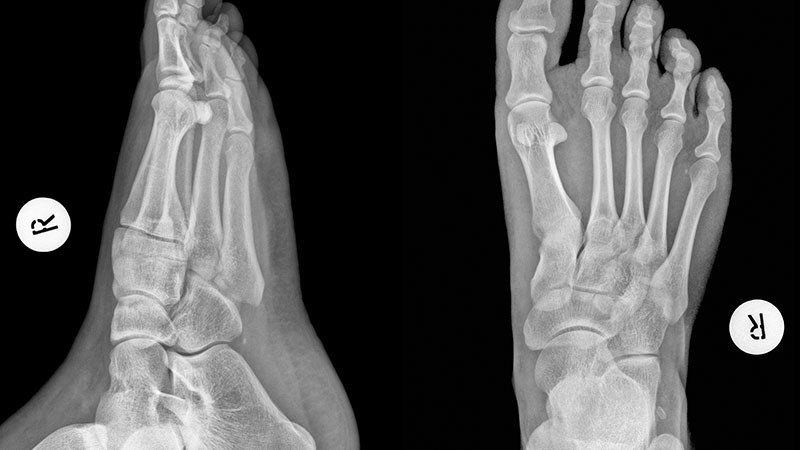While stepping on the ground, some load bearing areas are exposed to less force while others have to carry more weight. This inequality of load dispersion can cause problems in the feet. The sole of the feet houses many nerves. The nerve running between the third and the fourth toes, particularly, endures a lot more pressure than the others due to its anatomic structure. As pressure increases, this nerve gets thicker and gives way to a condition called Morton’s neuroma.
Who Develops Morton’s Neuroma?
- The basic reason behind Morton’s neuroma is excessive load. Therefore, it is more commonly observed in overweight people.
- People with a bunion, i.e. hallux valgus deformity, tend to develop Morton’s neuroma
- People with flat or high-arched feet are prone to have Morton’s neuroma.
- Pointed or high-heeled shoes may cause this condition as well.
Symptoms of Morton’s Neuroma
People with Morton’s neuroma feel discomfort especially when they are in closed shoes. Patients feel a sudden urge to take off the shoes, and when they do take them off, the disturbing signs such as burning sensation, electrification, and compression disappear. Below is a list of common complaints observed in Morton’s neuroma patients:
- An urge to take off shoes, especially while walking; followed by relaxation once shoes are taken off
- Numbing in the toes, electrification
- Discomfort at the base of foot; heat sensation
- Feeling as if there is something inside the shoe or as if the sock is bunched up
- Feeling as if there is a lump under the foot
Diagnosis of Morton’s Neuroma
Physicians carry out two major tests for patients presenting with symptoms above: these are compression test and Mulder’s click. Contrary to many other orthopaedic diseases, the final diagnosis for Morton’s neuroma is made through physical examination. The contrasted MRI examination, which may be needed in some cases, does not give decisive results.
Treatment of Morton’s Neuroma
Patients with Morton’s neuroma are first recommended to change their shoes and use special foot pads to ensure regulated dispersion of load. More than half of Morton’s neuroma patients recover in this way. If suitable footwear and foot pads fail to end complaints, physicians may then try alcohol or cortisone injections before suggesting surgery. Injections are administered twice at weekly intervals. When patients come in for a check-up in the third week, feet are examined to see if there has been any recovery. If there is no or little sign of recovery, surgery is considered.
Patients who do not benefit from non-surgical Morton’s neuroma treatment methods need to undergo Morton’s neuroma surgery. Morton’s neuroma surgery aims at loosening and relaxing the problematic nerves. A two-week’s rest is advised for patients who undergo this operation. Full recovery takes about 6-8 weeks. Wearing running shoes during this period is highly beneficial.
 EN
EN TR
TR AR
AR RU
RU